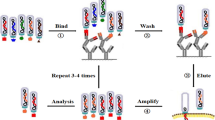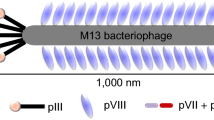Abstract.
In vivo phage display has been used extensively to screen for novel targets of tumor therapy. Phage display peptide libraries can express random peptides or protein fragments and the aim of phage display is to identify peptide molecules that bind stably to a given target. Angiogenesis is essential to tumor development. Both blood and lymphatic vessels of tumors are different from those of normal tissues. Phage display has been used to analyze the structure and molecular diversity of tumor vasculature and to select tumor-specific antigens which have revealed stage- and type-specific markers of tumor blood vessels. Furthermore, peptides identified by in vivo phage display also work as vehicles to transport cargo therapeutic reagents to tumors. These peptides and their corresponding cellular proteins and ligands may provide molecular tools to selectively target the addresses of tumors and their pathological blood vessels and might increase the efficacy of therapy while decreasing side effects.
Similar content being viewed by others
Author information
Authors and Affiliations
Corresponding author
About this article
Cite this article
Li, XB., Schluesener, H.J. & Xu, SQ. Molecular addresses of tumors: selection by in vivo phage display. Arch. Immunol. Ther. Exp. 54, 177–181 (2006). https://doi.org/10.1007/s00005-006-0026-y
Received:
Accepted:
Published:
Issue Date:
DOI: https://doi.org/10.1007/s00005-006-0026-y




